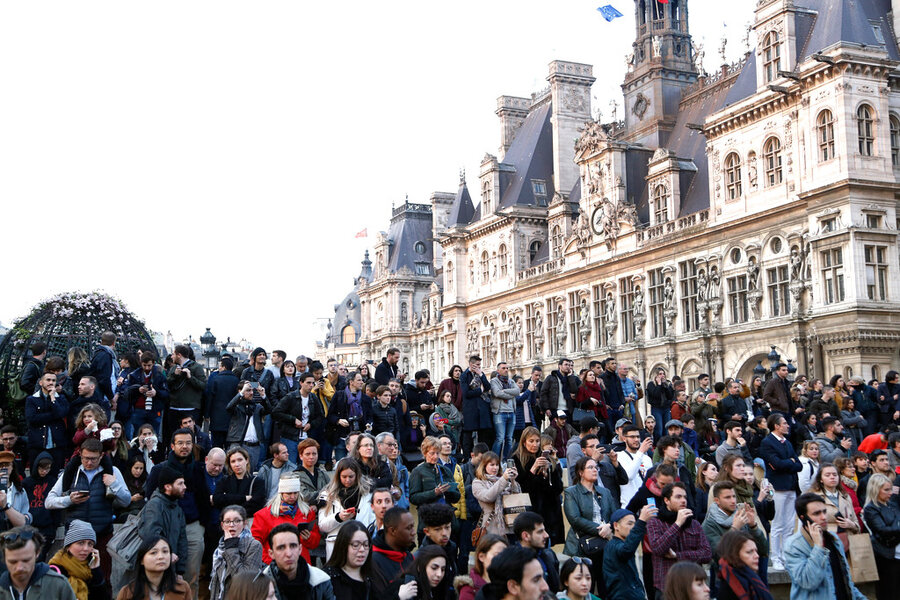The rebirth of Notre Dame’s purpose
Loading...
When tourists flock to Paris, they often gather at the Eiffel Tower, Louvre Museum, Montmartre, or Champs-Élysées. Yet the most popular gathering place – at about 13 million visitors a year – has been Notre Dame Cathedral. Its near-destruction by fire on April 15 helped to prove why.
During the giant blaze, hundreds of people in the City of Lights gathered to pray and sing. Others collected donations by the millions of euros to restore it. Around the globe, people gathered by a TV or a smart phone and, in a mix of disbelief and reverence, first learned of the damage to an icon that seemed so permanent. Just like its purpose nine centuries ago, this house of worship brought people together to affirm higher purposes.
For some, the purpose today lies simply in the wonder and beauty of the cathedral’s Gothic architecture: the flying buttresses, soaring spires, and peering gargoyles on a small island in the heart of France’s capital. Others see inspiration in its long human history; site of the coronation of kings, the beatification of Jeanne d’Arc, and fictional works such as Victor Hugo’s “The Hunchback of Notre-Dame.”
Hugo saw the structure as a “vast symphony in stone.” Yet he also called it as “powerful and fecund as the divine creation.” Christian churches, of course, are not really about the buildings. At a deeper level, they are an expression of spiritual yearnings and insights, often reflected in architectural elements that serve as reminders for believers.
Winston Churchill best described how a structure can feed back to its purpose. After a German bomb destroyed the House of Commons in 1941, members of Parliament squabbled over whether to restore it or expand it with large spaces and conveniences. Churchill reminded the MPs that the tight quarters of the House helped bring “intimacy of debate and discussion, that freedom and that sense of urgency and excitement.” In other words, he said, we shape our buildings and in turn they shape us.
The world’s most treasured buildings help circle us back to the grand ideas that led to their existence. They can be temples for worship, towers for learning, or simple structures for creativity. They are the domiciles of dominion over the values we cherish. Their materiality can be consumed by fire. But out of the ashes the same aspirations can arise. Those of Notre Dame will too.







